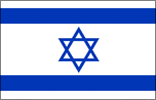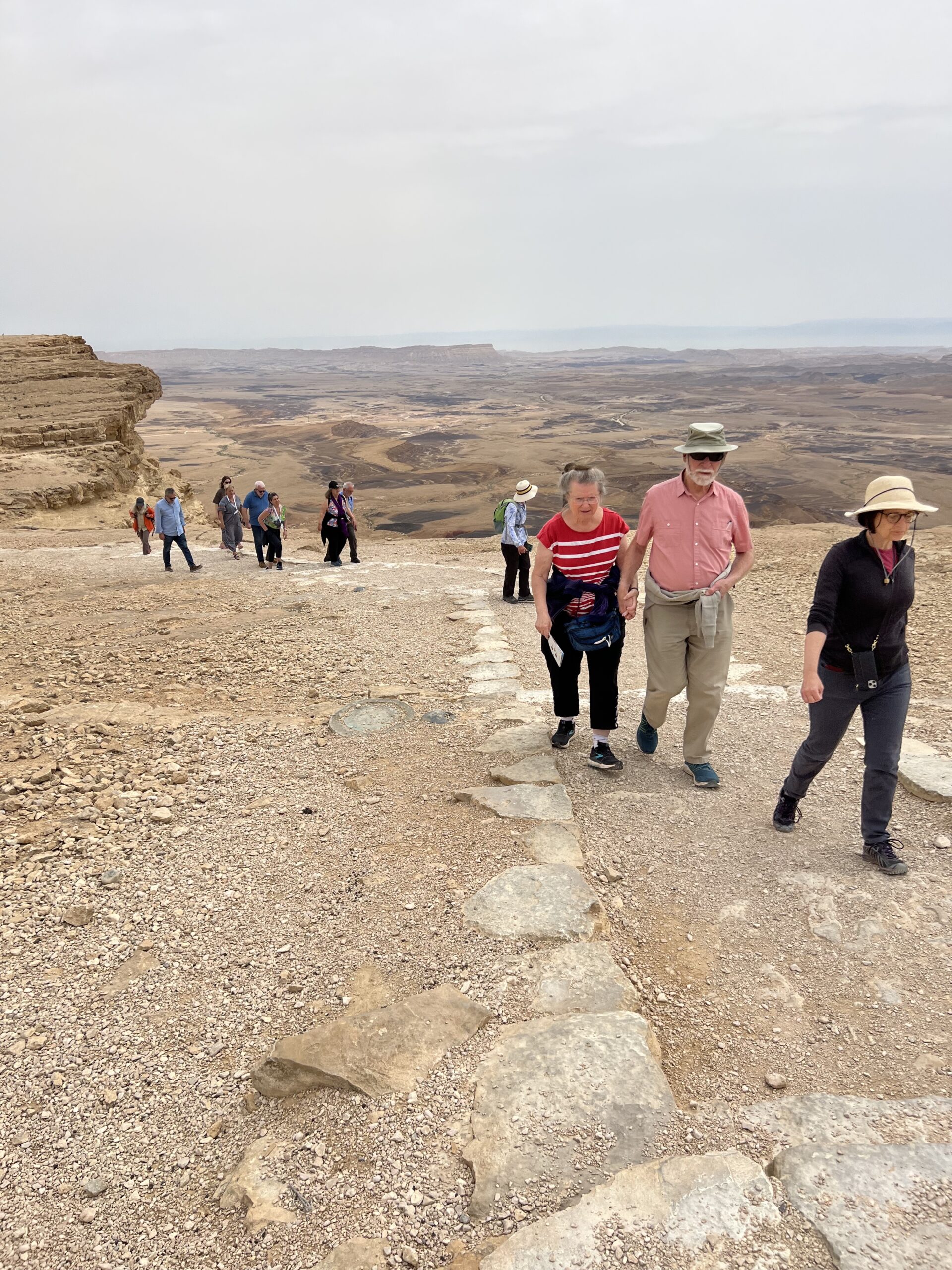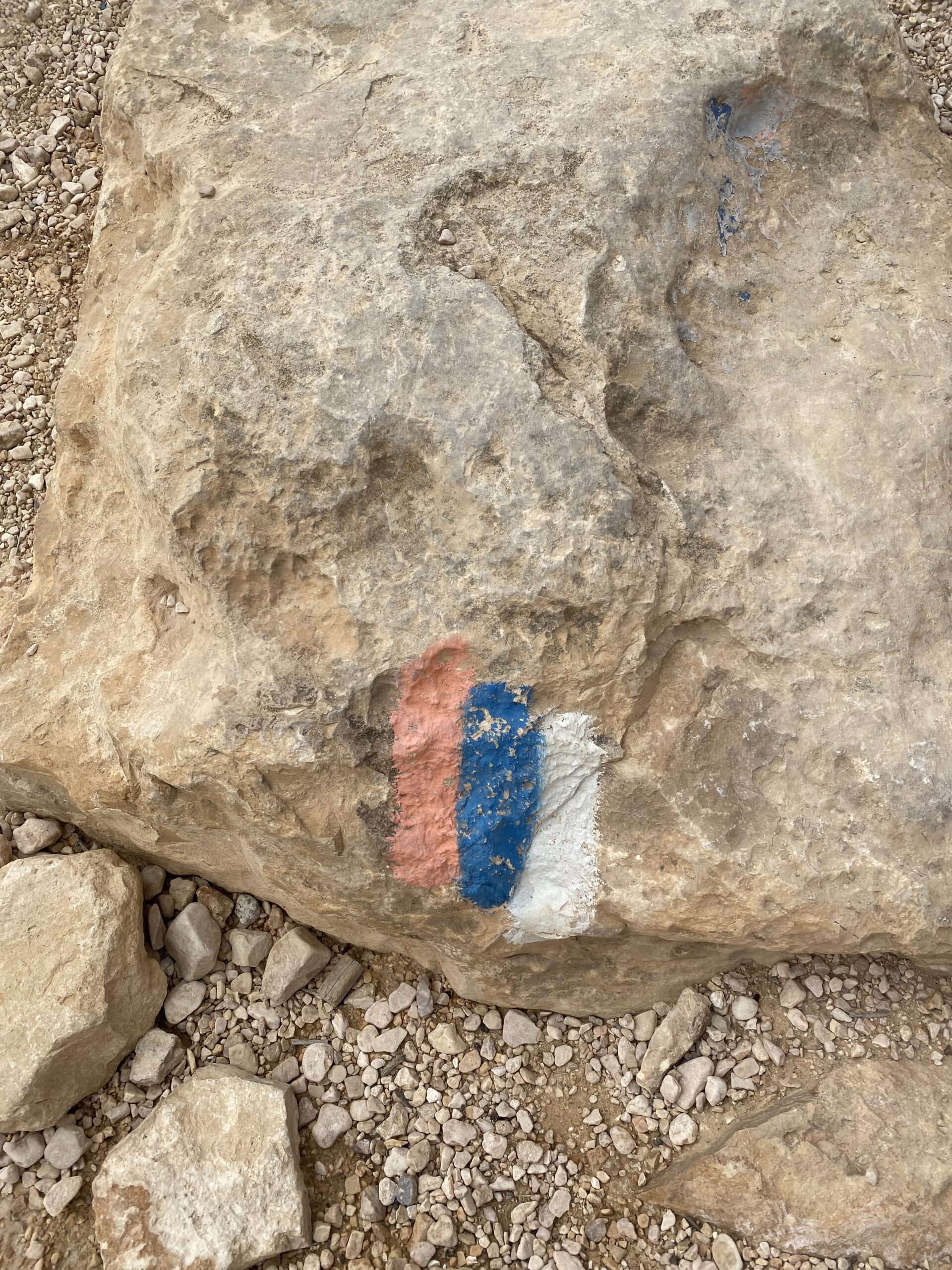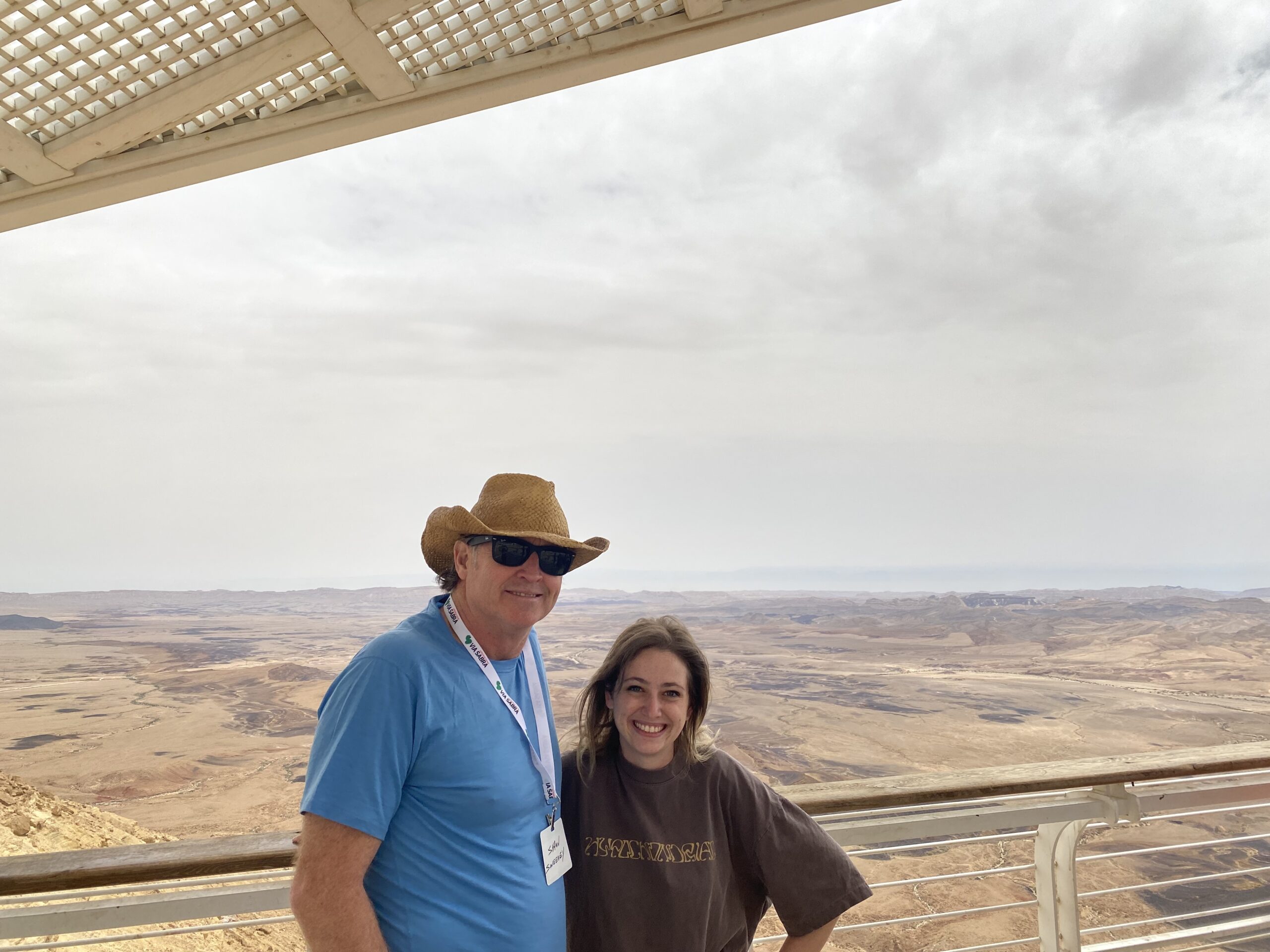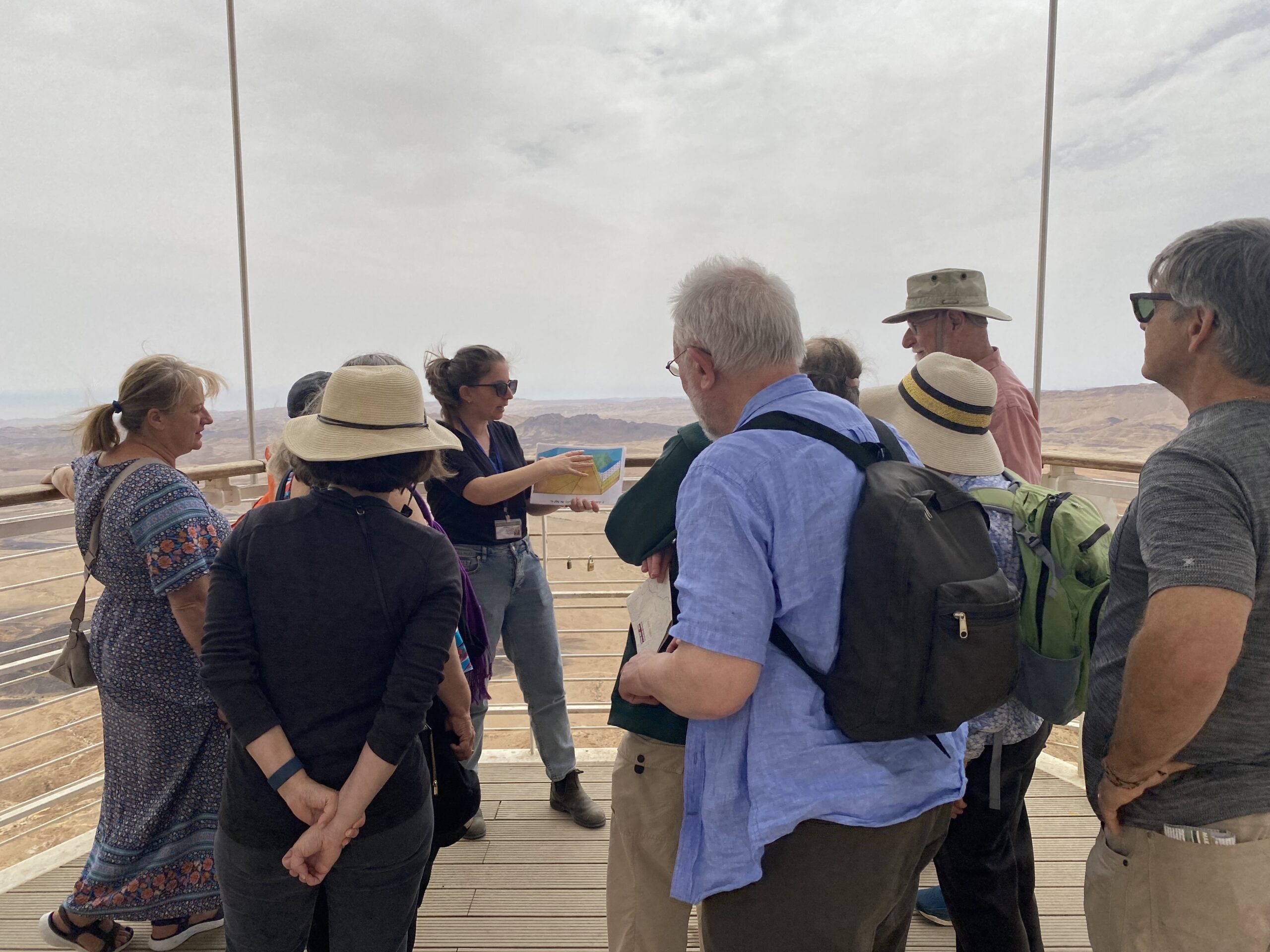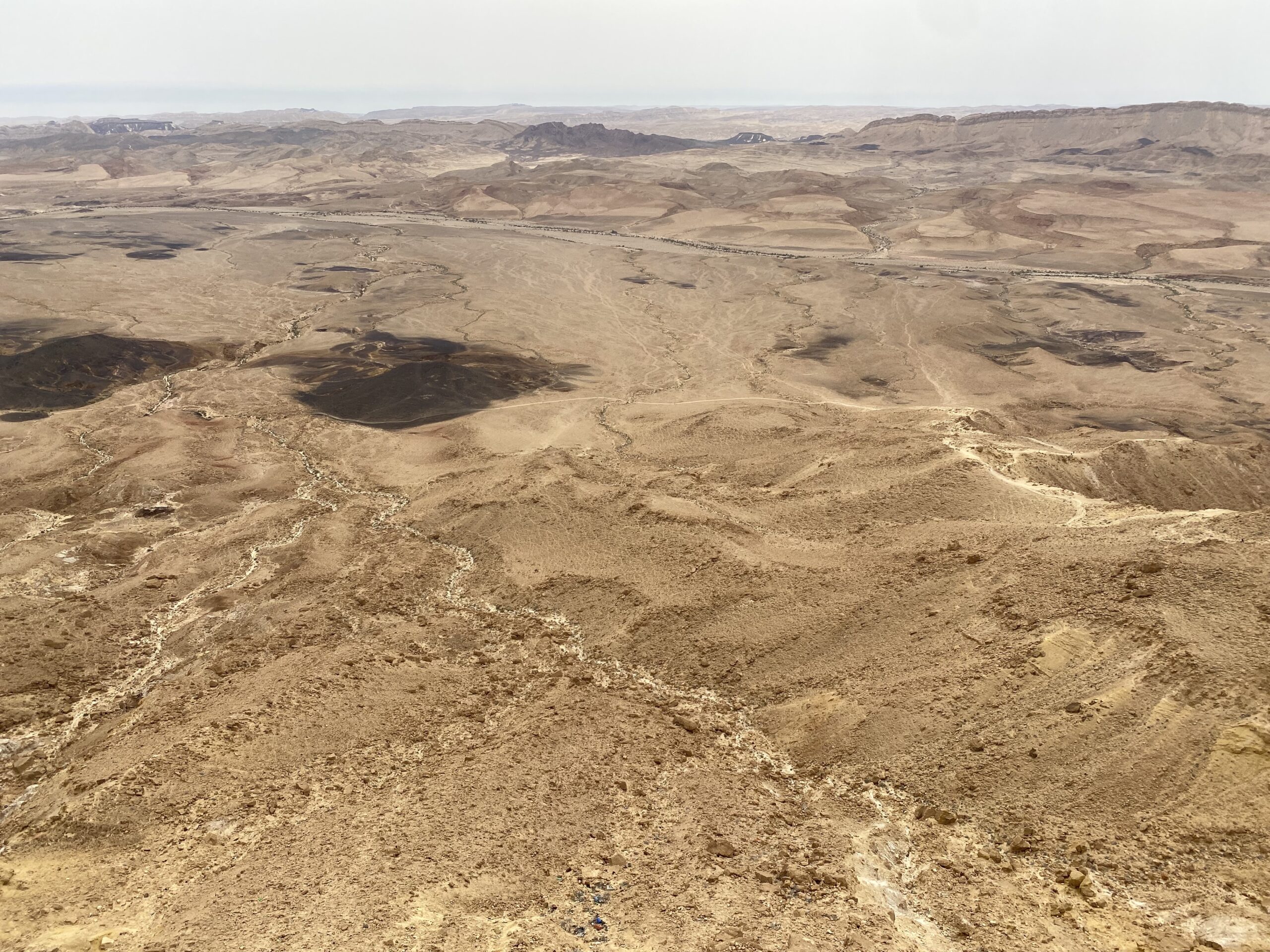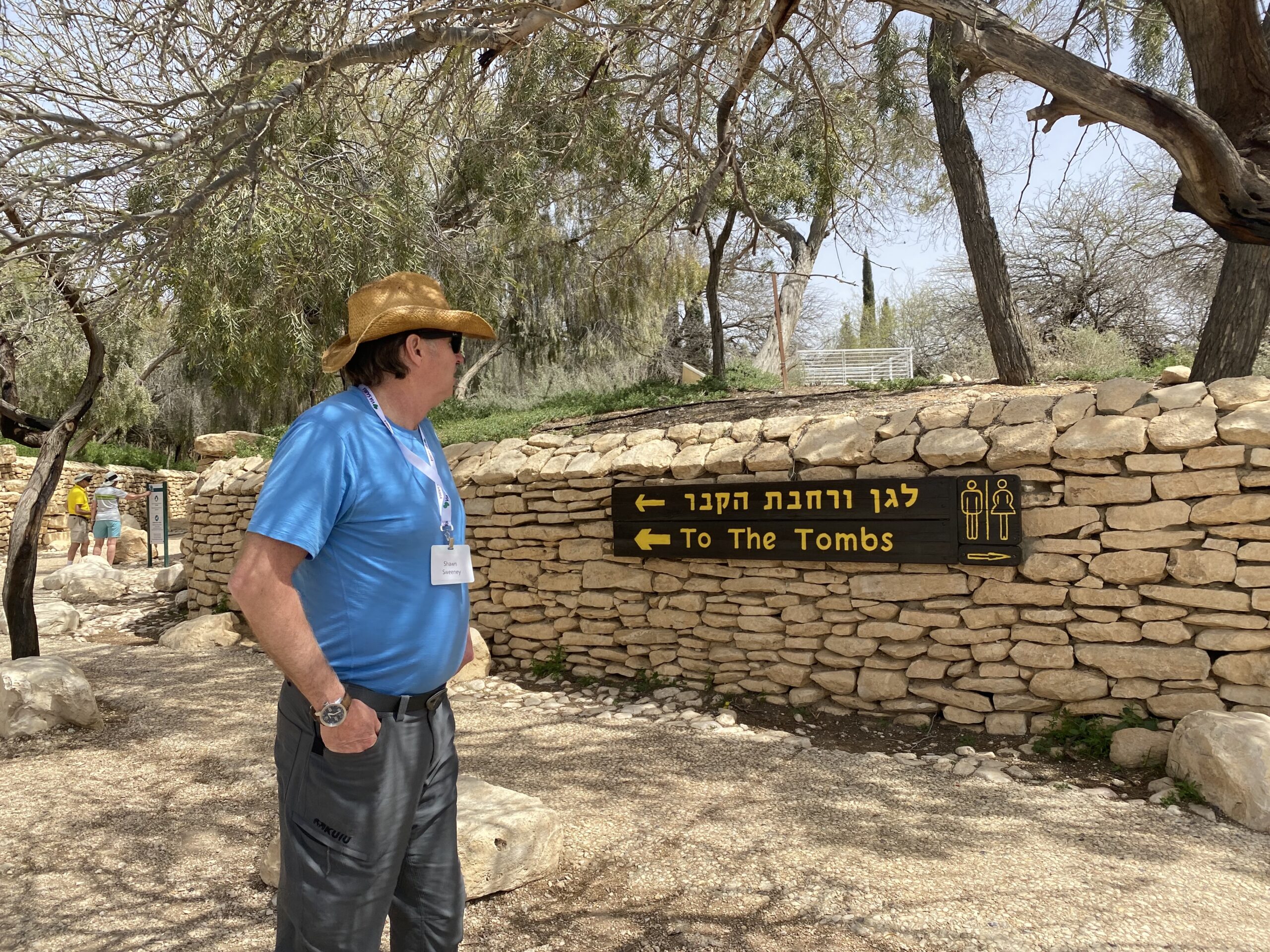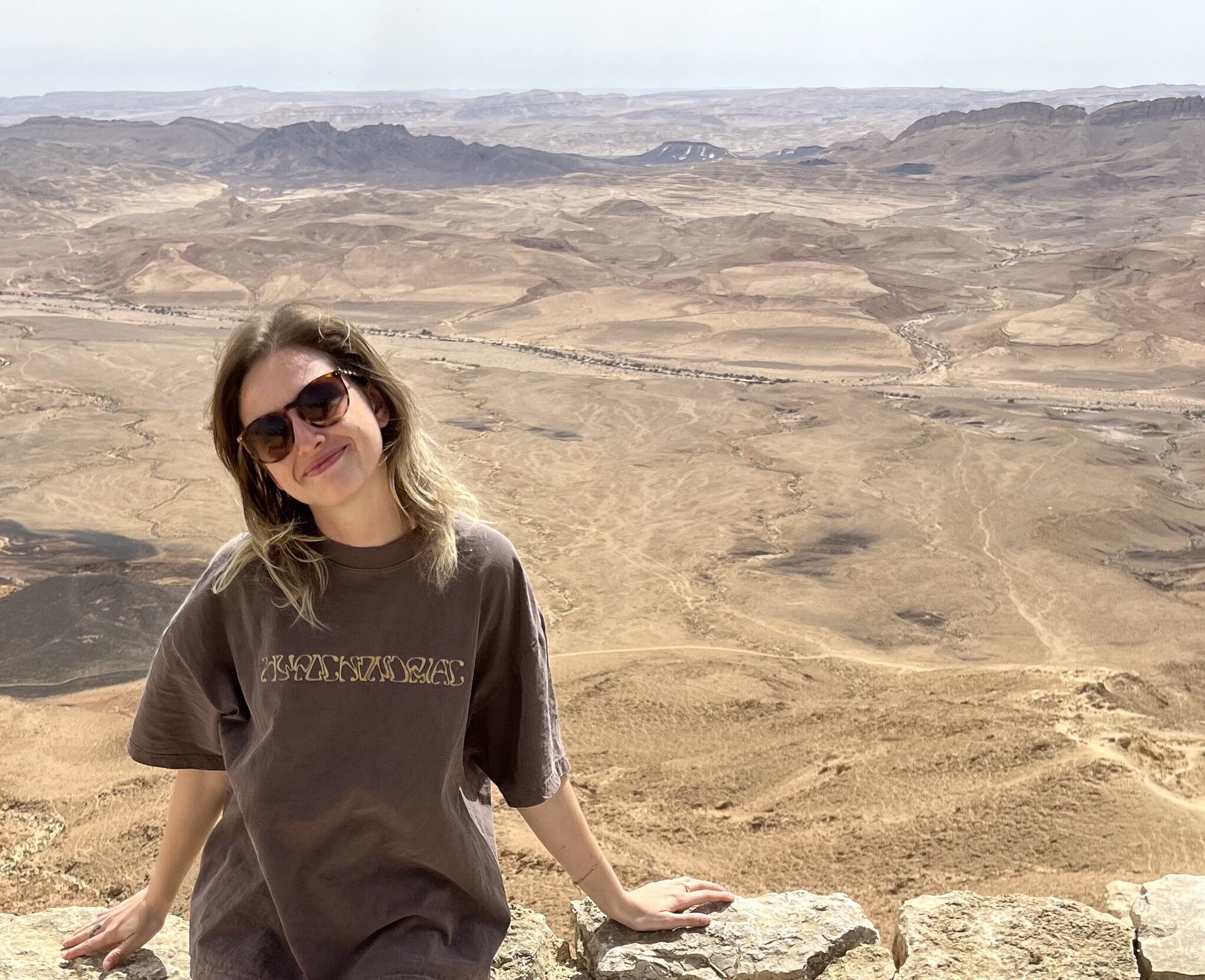
27 Mar March 24, 2023: Day 6
Ramon Crater
On our long drive from Eilat to Tel Aviv, we stopped at the Ramon Crater, or Makhtesh Ramon. As we approached the edge of the crater, I was struck by the breathtaking views of the surrounding desert and mountains. Reut pointed out Ibex droppings, exclaiming “Look what Amir Balaban has done to me!”
We saw markers on rocks as we made our way to a viewpoint overlooking the crater. Jay told us these were the markers of the Israel National Trail, created and preserved by SPNI. They follow a specific pattern to indicate when a hiker is headed north, south, or when they should leave the trail for an overlook or special site. Jay also explained what a makhtesh was, “A crater is just a depression in the earth caused by some sort of impact, while a makhtesh is an entirely enclosed body with a single narrow opening for water to collect and leave.”
“Makhteshim are only found in the Negev Desert and the Sinai Peninsula,”
Jay told us, emphasizing the uniqueness of the nature in Israel, and the necessity of SPNI to protect the area. The vastness of the sky at the overlook was breathtaking, and the vista of the crater was truly awe-inspiring. I could only imagine what a hiker must feel between miles 389-391 of hiking the Israel National Trail when they pass through the rare geological formation that is the Ramon Crater.
Mitzpe Ramon
We had lunch at Mitzpe Ramon, picnic-style with fresh bread, salads, and cold drinks to beat the scorching heat. As we ate our lunch, we chatted and laughed, enjoying each other’s company and the natural beauty around us, reminiscing on the time we had spent together. We saw several birds of prey soaring overhead, their wings catching the warm desert breeze. The memories of our picnic lunch at Mitzpe Ramon will stay with me forever, reminding me of the beauty and majesty of nature and the importance of taking time to appreciate it with my community.
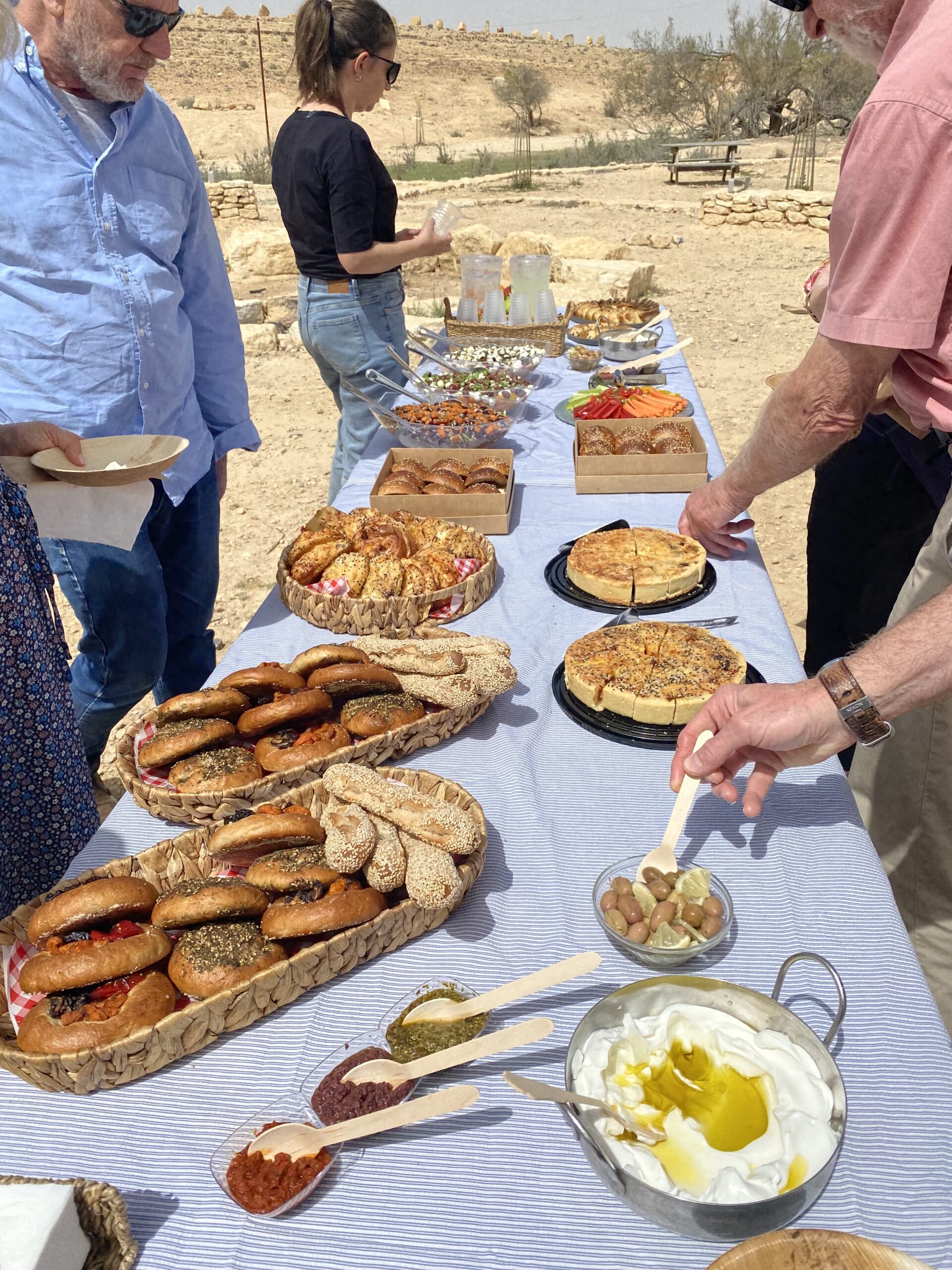
Ben Gurion’s Tomb
Our last stop of the trip was the tombs of David and Paula Ben Gurion. When we arrived at the gravesite, we were struck by the simplicity and beauty of the memorial. Located in a remote desert landscape, the gravesite consists of a simple stone monument surrounded by wildflowers and desert vegetation. We took some time to reflect on the Ben Gurions’ immense contributions to Israel’s history.
Reut took us aside to talk to us about the history of this site. She spoke about David Ben Gurion’s love of communities in the Negev, and his passion around starting communities here out of scraps. Reut described his strategic plan to be buried here, so that when people would come visit his grave they would bring tourism to the Negev. She said,
“Ben Gurion believed the future of the people of Israel would be determined in the Negev Desert”
On our trip, we have gotten to bear witness to this future, through the innovation and protection of nature in the field schools, national trails, preserved sites, and more. The legacy of David Ben Gurion is a testament to the strength and resilience of the Israeli people, and a reminder of the importance of perseverance in the face of adversity. This is the same energy that inspires SPNI to continue their work.
Reut reminded us how the Israelites wandered through the Negev after their liberation from Egypt. Reut read Exodus 15: The whole Israelite community set out from Elim and came to the Desert of Sin, which is between Elim and Sinai. “The valley we are looking over now is the Desert of Sin,” Reut connected,
“Every time I come here I am impressed by how the past and the future meet each other, from the Jews wandering the desert, to Ben Gurion’s work, to SPNI preserving the land so many more people can come here in the future,”
Finally, Reut read us her favorite Midrash, Midrash Kohelet Rabbah 7:13:
Everything that I have created, I created for you. Take care not to damage and destroy My world, for if you destroy it, there is no one to repair it after you.
This Midrash reminds us that we have a responsibility to care for the world around us, and that we should not take it for granted. During our travels, I have seen firsthand the impact that human actions can have on the environment, and the various conservation efforts and sustainable practices that SPNI is promoting to protect Israel’s natural resources. Our trip concluded with the teachings of this Midrash echoing in our minds, and inspiration to continue learning about sustainable practices and conservation efforts, and to do our part to protect the natural world for future generations.
I want to personally thank everyone who made this trip possible, especially Reut Aisenberg, Rachel Canar, Jonathan Silverstein, Jay Shofet, Barry Sheridan, David Amichai, and all those at Via Sabra. It was a wonderful adventure, and I would highly recommend it to anyone who is passionate about nature and Israel.



